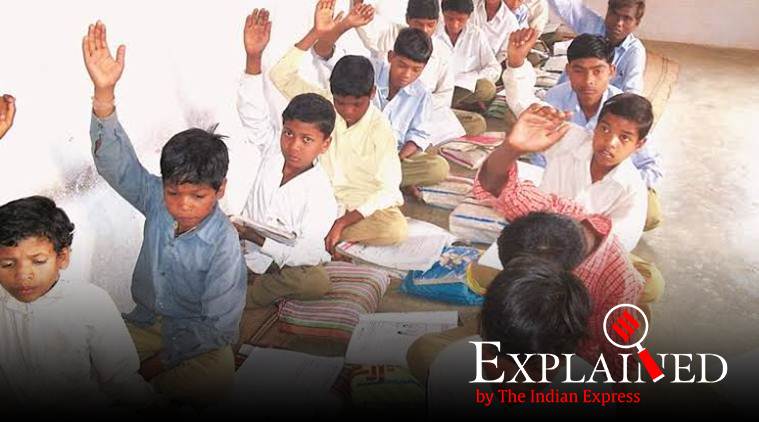Udit Misra is Senior Associate Editor. Follow him on Twitter @ieuditmisra ... Read More
© IE Online Media Services Pvt Ltd
- Tags:
- Express Explained
- Switzerland
Latest Comment
Post Comment
Read Comments
 According to the report, the Nordic economies such as Denmark and Finland top the social mobility rankings while countries like India, Pakistan, Bangladesh and South Africa languish at the bottom.
According to the report, the Nordic economies such as Denmark and Finland top the social mobility rankings while countries like India, Pakistan, Bangladesh and South Africa languish at the bottom.
The World Economic Forum, which organises the well-known annual gathering of the world’s most influential business and political decision-makers in the ski-resort of Davos (Switzerland), has come out with its first-ever Global Social Mobility Report, which has ranked India a lowly 72 out of the 82 countries profiled.
According to the report, the Nordic economies such as Denmark and Finland top the social mobility rankings while countries like India, Pakistan, Bangladesh and South Africa languish at the bottom (see Table 1).
| Country | Rank (out of 82) |
| Denmark | 1 |
| Germany | 11 |
| United Kingdom | 21 |
| United States | 27 |
| Russia | 39 |
| China | 45 |
| Saudi Arabia | 52 |
| Brazil | 60 |
| India | 76 |
| Pakistan | 79 |
Notwithstanding fast global growth, inequalities have been growing across the world. The rise of inequality has not only created massive social unrest but also adversely affected the global consensus on the kind of economic policies that countries follow.
A good example of this is the rise of trade protectionism across the world over the past few years. Be it the United States or the United Kingdom, two of the most fervent advocates of globalisation and trade openness, several countries have started looking inwards in the hope that greater trade protectionism will help allay the fears and apprehensions of domestic workers.
Typically, inequalities are measured in income terms. And this measure has been found inadequate. As the report states, “many situations exist where, despite high levels of absolute income mobility, relative social mobility remains low. For example, in economies such as China and India, economic growth can lift entire populations upward in terms of absolute income, but an individual’s status in society relative to others remains the same”.
The report states: “The notion of relative social mobility is more closely related to the social and economic status of an individual relative to their parents. In a country with a society with perfect relative mobility, a child born in a low-income family would have as much chance to earn a high income as a child born to parents who earn a high income”.
Thus, the concept of social mobility is much broader than just looking at income inequality. It encompasses several concerns such as:
Research has shown that in high-income countries, since the 1990s, there is stagnation at both the bottom and the top end of the income distribution—a phenomenon which social mobility experts describe as ‘sticky floors’ and ‘sticky ceilings’. In other words, how far an individual can move up in the society determines a lot whether one is closer to the income “floor” (or poor) or “ceiling” (or rich). For instance, in Denmark or Finland (which rank highest in social mobility index), if Person A’s parent earns 100% more than Person Z, it is estimated that the impact on Person A’s future income is around 15%, but in the US the impact is far more – about 50%– and in China, the impact is even more – roughly 60%.
Social mobility levels, then, can help us understand both the speed – that is, how long it takes for individuals at the bottom of the scale to catch up with those at the top – and the intensity – that is, how many steps it takes for an individual to move up the ladder in a given period – of social mobility. As shown in Table 2, it would take a whopping 7 generations for someone born in a low-income family in India to approach mean income level; in Denmark, it would only take 2 generations.
| Country | Number of generations required by a poor family member to achieve mean income level |
| Denmark | 2 |
| United States/ United Kingdom | 5 |
| Germany/ France | 6 |
| India/China | 7 |
| Brazil/South Africa | 9 |
Research also shows that countries with high levels of relative social mobility—such as Finland, Norway or Denmark— exhibit lower levels of income inequality.
Conversely, countries with low relative social mobility—such as India, South Africa or Brazil—also exhibit high levels of economic inequality.
That’s why it matters for countries like India to increase social mobility.
The WEF’s Global Social Mobility Index assesses the 82 economies on “10 pillars” spread across the following five key dimensions of social mobility:
India’s overall ranking is a poor 76 out of the 82 countries considered. Thus it should not come as any surprise that India ranks lowly in individual parameters as well.
Table 3 below provides the detailed breakup.
| Parameter | Rank (out of 82 countries) |
| Health | 73 |
| Access to Education | 66 |
| Quality and Equity in Education | 77 |
| Lifelong learning | 41 |
| Access to Technology | 73 |
| Work Opportunities | 75 |
| Fair Wage Distribution | 79 |
| Working Conditions | 53 |
| Social Protection | 76 |
| Inclusive Institutions | 67 |